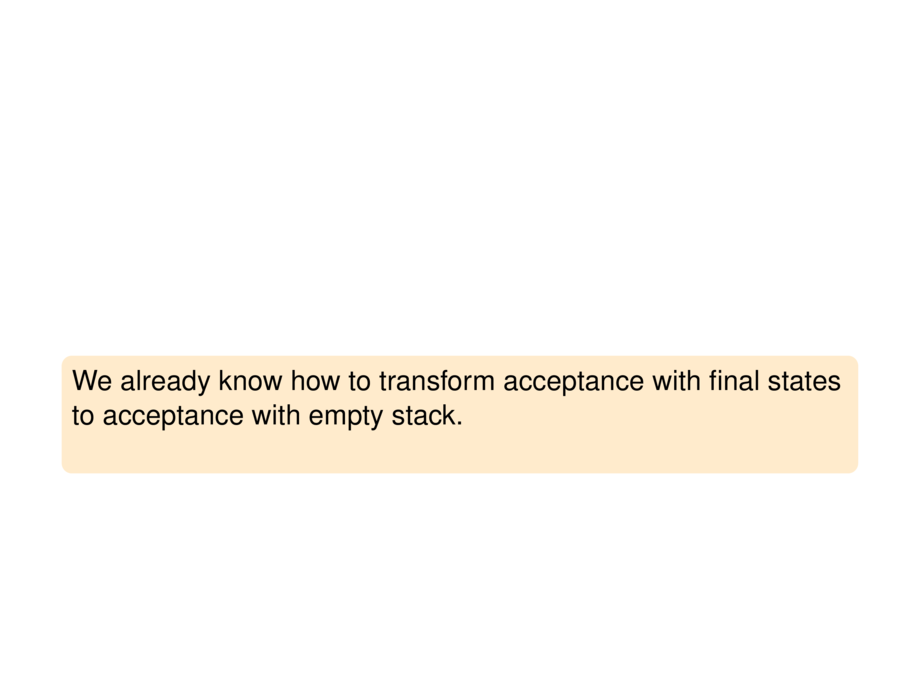



































































































115/162
\begin{frame}{Example}
\begin{exampleblock}{}
Consider the following NPDA with stack starting symbol $z=0$:
\begin{center}
\vspace{-1ex}
\begin{tikzpicture}[default,node distance=25mm,->,s/.style={minimum size=5mm}]
\node (q0) [state,s] {$q_0$}; \draw ($(q0) + (-8mm,0mm)$) -- (q0);
\node (q1) [fstate,s,right of=q0] {$q_1$};
\draw (q0) to[bend left=20] node [label,above,align=center] {$a[0/10]$\\$c[1/11]$} (q1);
\draw (q1) to[bend left=20] node [label,below] {$c[1/1]$} (q0);
\draw (q1) to[tloop] node [label,above] {$b[1/\lambda]$} (q1);
\end{tikzpicture}
\vspace{-2ex}
\end{center}
Ensure that the final state is only be reached with empty stack.
\end{exampleblock}
\pause
\begin{goal}{}
We already know how to transform acceptance with final states to acceptance with empty stack.
\pause
\emph{Here no fresh start state is needed;} the symbol $0$ always remains at the bottom.
\end{goal}
\pause
\begin{exampleblock}{}
\begin{center}
\input{tikz/npda4.tex}
\end{center}
\end{exampleblock}
\end{frame}

